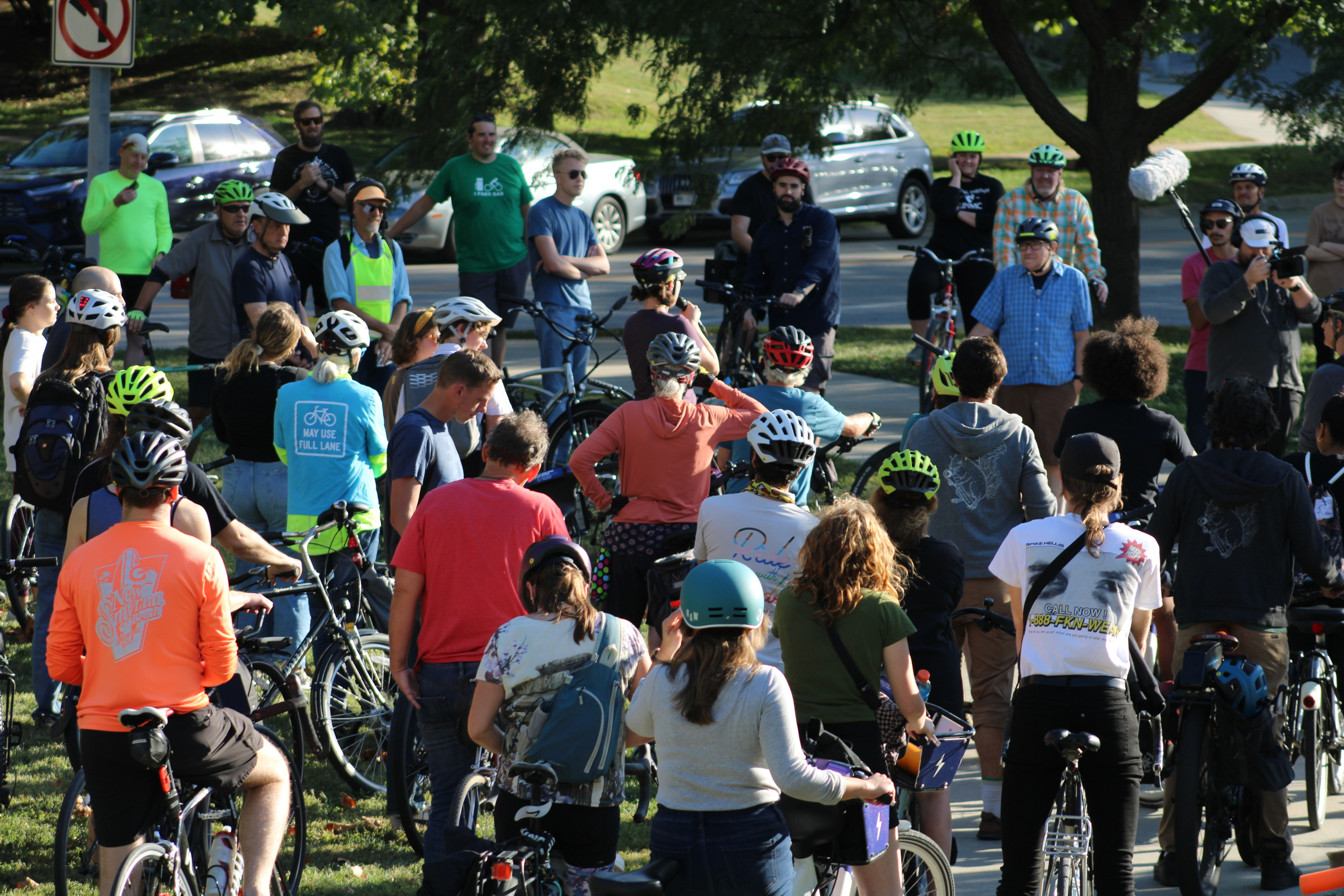by Patrick McAtee
Last month, Public Opinion Strategies conducted a phone survey of 400 Omaha residents (registered voters) to learn about city residents’ opinions regarding transportation. Public Opinion Strategies published a memo to summarize its findings. Interestingly, the survey shows that even though there is a strong preference for driving a car among Omaha residents, 72 percent favor “increasing spending to expand and improve public transportation, sidewalks and bike lanes in Omaha.” Even more surprising is that 57 percent favor increasing such spending even if it requires a tax or fee increase.
Public Opinion Strategies notes that the support for such a funding increase may be because of—or in spite of—the fact that few Omaha residents have actually used public transit or pedestrian and bicycle facilities when running errands, commuting, or going to school. The small percentage of people not getting around in a private vehicle (4%) might be explained by the fact that 85 percent of respondents indicated their one-way commute is 29 minutes or less.
Walking is by far the most-used alternative to a private car. When looking at the past month, 41 percent of respondents indicated having walked as a means of transportation, compared to 8 percent having bicycled and 6 percent having ridden the bus. Use of alternatives is highest among residents under 35 years old, and declines sharply for those over 55 years old.
The most common reasons people cite for using a private car are 1) because they have access to a car, 2) because other options are not convenient from their starting point, and 3) because other options are not convenient from their destination. Public Opinion Strategies notes that safety, the condition of paths and bike lanes, and traffic or driver behavior are not major reasons why people have not biked, walked, or taken the bus.
About three-fourths of residents indicate they have no choice but to drive, and the same fraction indicate they would prefer to drive even if they had more choices. Interestingly, 54 percent of residents agree with the statement “I would like to spend less time in my car,” while only 42 percent disagree with that statement. The percentage in agreement jumps to 70 percent when looking at individuals whose commute is longer than 15 minutes each way.
In terms of how residents value community characteristics, the four most important considerations were low crime rates, quality schools, affordable housing options, and a neighborhood park within walking distance. Transportation-focused considerations ranked in the bottom half of the nine characteristics presented to residents. However, residents indicated that sidewalks and pedestrian crossings should be second only to road repair and maintenance in terms of transportation priorities. New roads is third, followed by public transportation and bike infrastructure. There is also a perception that more is being spent on bicycle and pedestrian infrastructure than reality, yet residents also want more to be spent in these areas than is actually being spent.
The top three reasons residents indicated for expanding transportation options in Omaha were to allow people to get to their job, to reduce dependence on foreign oil, and provide more options. Reducing traffic congestion was fourth, while improving health and reducing obesity were fifth and seventh, respectively, out of the seven options reported. This highlights that residents of Omaha look at transportation from a pragmatic standpoint, and view the health-related benefits of active transportation secondarily.
Although the survey revealed some internal inconsistencies among Omaha residents, there is clear support for improving existing roadways to provide better support for vehicles and pedestrians. Although bicycle infrastructure didn’t have the same support, restriping roadways to add bicycle lanes to improve bicycle connectivity is not expensive compared to new roads, which residents do not favor. Improved bicycle access also serves all of the pragmatic priorities residents want to see for transportation spending: getting people to jobs, reducing oil consumption, and providing more options.
Most importantly, as Omaha winds down its transportation master plan process, this survey demonstrates tremendous support for dedicating some percentage of transportation spending to offer more choice, including public transportation and infrastructure for pedestrians and bicyclists. Making transportation choices more convenient and accessible will make Omaha a more vibrant and attractive place to live and allow it to remain at the top of so many national rankings of cities’ economic and social vitality.

